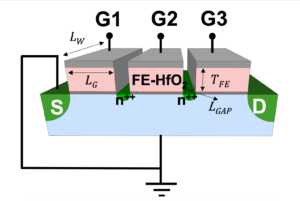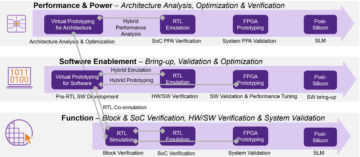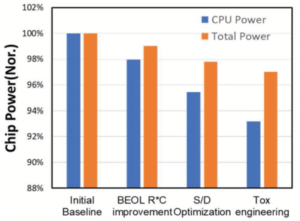The ESD Alliance, a SEMI Technology Community, announced today in its latest Electronic Design Market Data (EDMD) report that the Electronic System Design (ESD) industry revenue increased 11.3% from $3.47 billion in the fourth quarter of 2021 to $3.86 billion in the fourth quarter of 2022. The four-quarter moving average, which compares the most recent four quarters to the prior four, rose 12.6%.
“What stood out are the very good results,” Walden C. Rhines, executive sponsor of the SEMI Electronic Design Market Data report said. “11.3% overall. Double digit growth and growth in every category, and in every region around the world. That’s exceptionally good. It’s just a little bit under the four-quarter moving average. It says we’ve had just an exceptionally strong year this year. The four quarter moving average is 12.6%. This is 11.3% but still very close. It says that at least through the fourth quarter of 2022, the EDA industry is holding up very strongly. And as noted in the report, the EDA industry is hiring lots of people: it increased its employment by 10.3%. That’s a lot.”
The companies tracked in the EDMD report employed 56,501 people globally in Q4 2022, a 10.3% increase over the Q4 2021 headcount of 51,236 and up 2% compared to Q3 2022.
The quarterly EDMD report contains detailed revenue information with the following category and geographic breakdowns.
Revenue by Product and Application Category – Year-Over-Year Change
- Computer-Aided Engineering (CAE) revenue jumped 16.9% to $1.24 billion. The four-quarter CAE moving average increased 16.1%.
- IC Physical Design and Verification revenue rose 11.8% to $698.3 million. The four-quarter moving average for the category increased 6.9%.
- Printed Circuit Board and Multi-Chip Module (PCB and MCM) revenue edged up 1.7% to $339.4 million. The four-quarter moving average for PCB and MCM rose 9.9%.
- Semiconductor Intellectual Property (SIP) revenue climbed 9.3% to $1.44 billion. The four-quarter SIP moving average grew 12.9%.
- Services revenue increased 7.1% to $140.5 million. The four-quarter Services moving average rose 17.9%.
Revenue by Region – Year-Over-Year Change
- The Americas, the largest reporting region by revenue, procured $1.71 billion of electronic system design products and services in Q4 2022, an 8.7% increase. The four-quarter moving average for the Americas rose 13.6%.
- Europe, Middle East, and Africa (EMEA) procured $504.6 million of electronic system design products and services in Q4 2022, a 4.6% increase. The four-quarter moving average for EMEA grew 3.6%.
- Japan’s procurement of electronic system design products and services increased 8.6% to $242.1 million. The four-quarter moving average for Japan rose 1.7%.
- Asia Pacific (APAC) procured $1.4 billion of electronic system design products and services in Q4 2022, a 17.9% increase. The four-quarter moving average for APAC grew 17.1%.
- These results reflect the historic trend of the EDA industry to weather ups and downs well.
Rhines explained he and his team have monitored this through the years and it’s almost a moderating of the cyclicality of the semiconductor industry. “The semiconductor industry can grow plus 30%, minus 30%. Big numbers. You never see those swings with EDA. We used to try to dig into the whys of how the dynamics work in EDA. This is no longer easy to track because revenue recognition has changed. Bookings go into backlog, and are recognized ratably for at least two of the major companies, but based on the way it worked in the past, we suspected that what actually happens is as we go through a recession, first of all, companies don’t moderate their design activity very much. They might feel a design that’s very speculative, or they might slow down on some of the spending. But in general, the recession will be over, and when it’s over, you’ve got to have products, and you can’t just take a break from developing them. You can’t lay off designers and then rehire them. These are people that take a very long funnel to hire. The net result is that EDA tends to be pretty stable.”
This means that going into a recession, the semiconductor industry revenue drops, but EDA doesn’t initially. “Our theory has been that that’s because the engineers know that the recession is coming, so they up their purchases going into a recession in order to stock up for the downturn,” Rhines continued. “Then when things start to recover, the management sees that their R&D as a percent of revenue is way out of line, so they hold off on any new spending, which means that EDA lags in the recovery until finally the designer comes in and says, ‘I quit. I’m tired of using the simulator only at midnight.’ That’s when they start to ease up and start buying tools again.”
Rhines said this is just his theory, and not part of the study or ESDA.
“The net of the total you can depend upon, which is the downturns are modest, and the upturns are not as extreme as with the semiconductor industry,” Rhines added.

- SEO Powered Content & PR Distribution. Get Amplified Today.
- PlatoAiStream. Web3 Data Intelligence. Knowledge Amplified. Access Here.
- Minting the Future w Adryenn Ashley. Access Here.
- Source: https://semiengineering.com/eda-posts-q4-2022-revenue-of-3-9b/
- :has
- :is
- :not
- $3
- $UP
- 1
- 10
- 100
- 11
- 12
- 13
- 2%
- 2021
- 2022
- 24
- 27
- 7
- 8
- 9
- a
- activity
- actually
- added
- africa
- All
- All Posts
- Alliance
- Americas
- an
- and
- announced
- any
- APAC
- Application
- ARE
- around
- AS
- At
- average
- based
- BE
- because
- been
- Big
- Billion
- Bit
- board
- bookings
- Break
- but
- Buying
- by
- CAN
- Category
- changed
- Climbed
- Close
- comes
- coming
- community
- Companies
- compared
- contains
- continued
- data
- Design
- Designer
- designers
- detailed
- developing
- DIG
- Digit
- Doesn’t
- Dont
- double
- down
- downs
- DOWNTURN
- downturns
- Drops
- dynamics
- ease
- East
- easy
- editor
- Electronic
- EMEA
- employment
- Engineering
- Engineers
- Every
- executive
- explained
- extreme
- feel
- Finally
- First
- following
- For
- four
- Fourth
- from
- General
- geographic
- Globally
- Go
- going
- good
- Grow
- Growth
- had
- happens
- Have
- he
- headcount
- hire
- Hiring
- his
- historic
- hold
- holding
- How
- HTTPS
- in
- Increase
- increased
- industry
- information
- initially
- intellectual
- intellectual property
- into
- IT
- ITS
- Japan
- jpg
- just
- Know
- largest
- latest
- least
- Line
- little
- Long
- longer
- Lot
- major
- management
- Market
- Market Data
- means
- Middle
- Middle East
- might
- million
- module
- monitored
- most
- moving
- moving average
- much
- net
- New
- no
- noted
- numbers
- of
- off
- on
- only
- or
- order
- out
- over
- overall
- Pacific
- part
- past
- People
- percent
- physical
- plato
- Plato Data Intelligence
- PlatoData
- plus
- Posts
- pretty
- Prior
- Product
- Products
- Products and Services
- property
- purchases
- Q3
- q3 2022
- Quarter
- R&D
- recent
- recession
- recognition
- recognized
- Recover
- recovery
- reflect
- region
- report
- Reporting
- result
- Results
- revenue
- ROSE
- Said
- says
- see
- sees
- Semi
- semiconductor
- Services
- simulator
- slow
- So
- some
- Spending
- sponsor
- stable
- start
- Still
- stock
- strong
- strongly
- Study
- suspected
- Swings
- system
- Take
- team
- Technology
- that
- The
- the world
- their
- Them
- then
- These
- they
- things
- this
- this year
- those
- Through
- thumbnail
- tired
- to
- today
- tools
- Total
- track
- Trend
- two
- under
- upon
- UPS
- used
- using
- Verification
- very
- Way..
- we
- Weather
- WELL
- What
- when
- which
- will
- with
- Work
- worked
- world
- year
- years
- you
- zephyrnet












